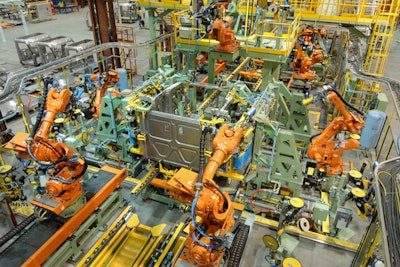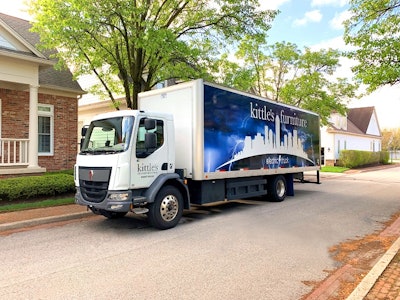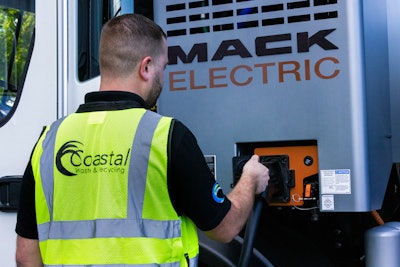It wasn’t quite as earth-shaking as the unveiling of ChatGPT, but when Figure AI revealed earlier this year that it raised $675 million at a $2.6 billion valuation from the likes of Jeff Bezos, Nvidia and Microsoft, the venture industry felt a tremor underfoot.
Robots aren’t new. They have been around for decades, and VCs have been investing in the sector for much of that time. What is new is the field of humanoid robotics, systems that resemble humans and, thanks to AI, can behave like humans. Figure AI is among more than a dozen VC-backed start-ups leaning into developing humanoid robots, based mostly on rising demand to address labor shortages. According to one estimate, the market for humanoids could grow to nearly $40 billion in roughly 10 years.
Venture funding for humanoid robotics start-ups hit an all-time high this year. VCs invested $955 million into 11 deals as of May 31, up from $380 million invested in 16 deals for all of 2023, according to research by Crunchbase.
More than a dozen companies – both public and private – have produced humanoid robots, some of which are already at work in warehouses and factories. But what has investors excited is demand brought about by a growing number of jobs at warehouses, manufacturing plants, hospitals and other worksites that are repetitive, unengaging or dangerous and where turnover is typically high.
As of February 2024, there were 300,000 manufacturing jobs and a similar number of warehousing positions that cannot be filled, according to the Bureau of Labor Statistics (as reported in the 2024 edition of A Roadmap for US Robotics). Others cite BLS data showing that more than one million jobs in logistics and manufacturing are currently open, twice the number of six years ago.
An April report by the Deloitte Research Center for Energy & Industrials said the net need for new manufacturing employees could be around 3.8 million between 2024 and 2033, but that roughly half of these jobs (1.9 million) could remain unfilled if manufacturers can’t address the skills gap and the applicant gap.
In January, Goldman Sachs revised its market estimate for humanoid robotics, projecting it will reach $38 billion in sales by 2035. Under its “bull case” scenario, Goldman now expects humanoid robot shipments to reach one million units by 2031, four years ahead of its previous projection. It said shipments have been accelerated by advancement in end-to-end AI, a deep learning process where all parts of a model are trained at the same time instead of sequentially. Goldman’s most optimistic scenario predicts that humanoid robots will become the next commonly adopted technology after electric vehicles and smartphones, with the potential to tap into more consumer applications and speed adoption.
Nicole Ebner, operations manager of the robotics team at TUM Venture Labs, sees Goldman’s market projection as very ambitious. She believes a market size of $25 billion-$30 billion by 2035 is more likely, depending on the pace of further development. TUM Venture Labs is a joint initiative of the Technical University of Munich and Unternehmer TUM, Europe’s largest entrepreneurship center.
Ebner’s colleague, Philipp Gerbert, general managing director of TUM Venture Labs, estimates the humanoid market to be about $2.5 billion today and thinks it’s reasonable that it could grow to $10 billion by 2030. If humanoids can penetrate their target markets, there is a lot of potential for global expansion that might support further growth from $10 billion to $35 billion between 2030 and 2035, Gerbert notes. But he adds that he hasn’t done that analysis.
“The need is there, but is the buying potential there?” Gerbert wonders. He’s more confident about early adoption than late adoption when it comes to technology in general.
Although humanoids are expected to grow by more than 30 percent per year over the next five years, much faster than traditional robots, the market for traditional robots is nearly 25 times larger and will continue to dwarf the humanoid market, even if by a smaller factor, says Gerbert. That’s equally true for the bigger robotics markets, which are primarily in Asia today.
One reason that Goldman revised its market projections is that it expects declining costs to produce humanoids and higher productivity to accelerate the payback period for investment for both industrial and consumer applications.

“The companies [producing humanoids] are burning through millions of dollars per month to be able to supply this to their customers. So that tells you that it’s complicated and expensive to develop.”
Lisa Chai
Interwoven Ventures
The report states that the manufacturing cost for humanoid robots dropped around 40 percent from a likely $50,000-$250,000 per unit last year to $30,000-$150,000 (range of low spec to high spec) now. That was a bigger decline than the 15-20 percent decline built into Goldman’s prior estimate. The availability of cheaper components, increased supply-chain options and optimization in design and manufacturing techniques were all credited with helping drive down the expected cost.
Lisa Chai, general partner at Interwoven Ventures, which spun out of ROBO Global Ventures last year, describes Goldman Sachs’ estimate as “outrageous.” Interwoven invests in robotics and automation for the least digitized industries, such as healthcare, manufacturing and logistics.
Chai notes that there is little consensus among investors and other stakeholders as to whether humanoid technology is ready to scale or not, which use cases it is best suited for and what the potential market size is. Nor does she see evidence that pricing has come down.
Chai also doesn’t see large-scale commercial deployment for humanoids yet. There are “a handful of companies like BMW and Volvo and a few others that are deploying it for one warehouse or one manufacturing floor,” she said. “And the companies that are producing it are burning through millions of dollars per month to be able to supply this to their customers. So that tells you that it’s complicated and expensive to develop.”
They’re already here
Several humanoid robots are already in use or well into development, including Boston Dynamics’ Atlas robot, Tesla’s Optimus 2 and Kawasaki Heavy Industries’ Kaleido. Atlas, which can move heavy and oddly shaped items around a factory, is being evaluated in auto manufacturing applications at Hyundai Motor Company’s factories. Despite all the online video hype around accelerated development of Optimus 2, industry analysts believe it’s intended mainly to replace a portion of Tesla’s workforce in its manufacturing plants. Additional units will likely be sold to Tesla’s commercial partners before being made available to external users.
“The large incumbents that have plenty of cash and have their own internal programs can pursue humanoid general robotics all day long,” says John Ho, a partner at Anzu Partners. “But if you’re a start-up and you’ve got limited capital, I think you have to start with a niche problem and have to address it first and earn the right to build a broader platform. [That applies to] wherever you are in the tech stack, whether it’s on the software side or the hardware side or the sensor side. I’ve seen that strategy be successful in a lot of cases.”
Ho says it is hard to find a start-up that’s really well funded and is able to compete with the incumbents.

“If you’re a start-up and you’ve got limited capital, I think you have to start with a niche problem and have to address it first and earn the right to build a broader platform”
John Ho
Anzu Partners
Figure AI may be one of those rare cases. The Sunnyvale, California-based company is developing humanoid robots designed for manual labor in manufacturing, logistics, warehousing and retail worksites. The company’s Series B round in February was led by Parkway Venture Capital, partnering with Microsoft, Nvidia, Evolution VC Partners and Bezos Expeditions, among others.
The company aims to address drastic labor shortages and reduce the number of workers needed for unsafe jobs. With OpenAI as a partner, Figure AI has access to perhaps the best computing power in the world.
Figure AI is testing its robot with just two early strategic customers – Amazon and BMW – to ensure those companies are satisfied with its work in their facilities before it goes after the addressable market. The company estimates that one of its humanoids at full speed is equivalent to 2.5 humans when you factor in shift changes, the greater number of hours they can work without overtime pay and time lost to workers’ vacations and sick days. Gregg Hill, co-founder and managing partner at Figure AI investor Parkway, believes the cost savings will prevent a lot of companies from going under.
For now, just a few Figure AI humanoids are working in BMW’s plant in Spartanburg, South Carolina, which produces 60 percent of the company’s vehicles. At the start, the humanoids are moving sheet metal, boxes and tools, and working in hazardous conditions. Later, they will work on cars and take on more tasks within that facility before expanding to BMW’s German plant.
The plan is the same at Amazon, with the potential to eventually expand the number of robots to thousands of its facilities. “You’ve got to prove you can do it 20 hours a day, and not just do the tasks, but come back the next day with no problems,” Hill tells Venture Capital Journal. “Reliability. That’s what we’re working on.”
Months before signing a deal with BMW and bringing in the first humanoid, Figure AI had humans working in the Spartanburg plant, collecting data with videos to train the units on and “making sure we can do everything they’re asking us to,” Hill notes. The company will use what it learns from the partnership with BMW to “create a business model and a really tight understanding of what the rollout’s going to be with other customers,” he adds.
Figure AI is hardly alone. Last year, Apptronik debuted Apollo, described as a general-purpose AI humanoid. It is being used at Mercedes-Benz plants, working with humans on assembly kits and doing inspections of vehicle parts, among other tasks. Apptronik sees it eventually expanding to the construction, oil and gas and elder care industries. Partnering with Nvidia will enable Apollo to learn new tasks from human demonstrations, expanding the robot’s repertoire to ever more complex possibilities.

“You’ve got to prove you can do it 20 hours a day, and not just do the tasks, but come back the next day with no problems… Reliability. That’s what we’re working on”
Gregg Hill
Parkway
Apptronik raised a total of $28.3 million in back-to-back seed rounds between May 2022 and February 2023, from venture firms including Capital Factory. It raised an additional undisclosed amount in a subsequent round this year.
Working with humans
In December, Agility Robotics started a proof-of-concept pilot program with GXO Logistics, which manages more than 970 supply chain plants globally. In the pilot, Agility’s Digit humanoids work alongside humans at a Spanx women’s wear warehouse outside Atlanta.
The aim of the pilot is to demonstrate Digit can work safely, cooperatively, fluidly and autonomously at required duty cycles right alongside human beings, and that it’s “an appropriate complement for human workers when those jobs cannot be filled,” says Matt Ocko, co-founder and managing partner of DCVC, which co-led Agility’s $150 million Series B round in April 2022.
Digit is trained through 6 Rivers’ AMR system to pick up tote boxes from autonomous carts and place them on conveyers, taking over the most repetitive and physically taxing work from people and freeing them to do more valuable tasks. Digit weighs about 140 pounds and can lift up to 35 pounds. Each humanoid can process 1,500 totes – each holding a significant but variable number of individual packages – per eight-hour shift. That works out to be three totes per minute, which is “equal to or better than the best human performance,” Ocko says.
So far, questions around Digit’s performance have been answered with sufficient rigor that Agility’s main problem is whether it has enough manufacturing capacity rather than customer engagement, Ocko adds.
He emphasizes that the robots are not displacing human workers because they are deployed “almost entirely for effectively unfillable jobs.” Ocko estimates the annual robots-as-a-service (RaaS) market to be $150 billion-$200 billion, depending on how much weight the units can handle.
Agility sees the real utility of humanoids as being able to connect islands of automation within a warehouse, as chief technology officer Melonee Wise said on an episode of The Robot Report podcast last year. Logistics giant GXO envisions humanoids like Digit enabling “end-to-end product flow throughout the warehouse, where until now, solutions have been mostly discrete applications: goods-to-person, sorters and wearable tech,” according to The Robot Report.
 “[One aim is to demonstrate Agility’s Digit humanoids are] an appropriate complement for human workers when those jobs cannot be filled”
“[One aim is to demonstrate Agility’s Digit humanoids are] an appropriate complement for human workers when those jobs cannot be filled”
Matt Ocko
DCVC
In addition to filling jobs that most humans no longer want and boosting productivity in collaborative workspaces, humanoids will be in demand for dangerous work in hazardous environments such as mining, firefighting and disaster rescue operations. Traditional robots don’t have legs – they have wheeled bases that allow them to be mobile because they work in buildings with level floors and elevators. Humanoids, which typically have flexible legs, arms and hands built for finer manipulation, are better suited to work in uneven terrains such as a mountain rescue mission, or other environments where humans can’t safely go.
Ocean One, a deepwater exploratory robot created by The Stanford Robotics Center has a humanoid front half, with twin cameras serving as eyes to provide stereoscopic vision and arms and hands to manipulate objects around it. The rear half of the robot has eight multi-directional thrusters to enable precision maneuvering underwater. Ocean One allows exploration of historical shipwrecks 1,000 meters underwater, where humans can’t safely go.
Steve Cousins, executive director of the robotics center, calls Ocean One an avatar, which makes you feel you’re in a space that you’re not physically in. “It’s a way for man to act where we can’t be,” Cousins says. “We can’t go 1,000 meters below the ocean surface and interact with shipwrecks. OceanOne lets you have a body – at least the upper front half of it is modeled to be like a human body.”
A haptic device, which simulates physical touch but is controlled remotely – similar to that which Ocean One is using to excavate deepwater shipwrecks and also created at Stanford – has been shown to be able to operate devices on Earth from a space station. The idea is to be able to deploy avatars for planetary exploration to see what’s occurring on the surface with the help of these devices, Cousins notes.
Given their “likely adaptability to dynamic environments enabled by AI algorithms,” humanoids are well suited for dangerous work such as coal mining, disaster rescue, nuclear reactor maintenance, chemicals manufacturing and auto manufacturing, the Goldman report says. Assuming labor substitution rates of 5-15 percent for those five applications, humanoid robot demand can potentially reach 1.1 million-3.5 million units globally, the report states.
Bolstering the argument for use cases in hazardous settings are national policy initiatives such as plans by China’s Ministry of Emergency Management and Ministry of Information & Technology. The ministries hope to develop emergency robots to provide early warnings, search and rescue, communication command, logistics support, safety production operations and disaster relief, the Goldman report notes.
It’s unclear what timeframe Goldman has in mind for these dangerous-work applications. But Majid Khadiv, professor of AI Planning in Dynamic Environments at TUM, doubts they will be viable within 10 years.
“The technological problem is the main bottleneck,” says Khadiv, who is also principal investigator at the Munich Institute of Robotics and Machine Intelligence (MIRMI). “It’s not about computation or machine learning.”
Robotic actuators, which convert stored energy into mechanical work and enable physical motion, are seen as the equivalent of muscles but are “not nearly as versatile and dexterous as human muscles.”
For Khadiv, the technological bottleneck is exemplified by the limitations of robotic hands. Currently, no robotic hand can do even 10 percent of what the human hand is capable of, he says. The ability for robotic hands to manipulate objects and fully interact with dynamic environments “are super-difficult problems and we are not even close to solving them,” he says. “That’s why I think we’re not close to [humanoids] doing disaster response or firefighting or this kind of thing.”

Debate over form
Cousins at Stanford believes humanoids with legs and other mobile manipulators merit attention because they can operate in more places. But he also notes they are weaker in some respects than a mobile robot with wheels like a Tesla EV, which can go up to 200 miles an hour. “You design the form for the task that you need,” he says.
Creative Ventures has invested in robotics start-ups such as Picnic, which automates pizza-making, and Southie Automation, which has made co-packing of variations of the same product in warehouses easier. Partner James Wang doesn’t see much utility in making these robots resemble humans.
“We are more skeptical as to humanoids robotics,” Wang says. “In theory, the platforms can do anything, but people said the same thing about robotic arms for all sorts of tasks, including food services.
“For the most part, it is quite complicated, and unnecessarily so, to make things into a humanoid or human-like form that’s super flexible. Most of these different robotics and AI tasks are [geared for] specific tasks. You can make something much more tailor-made and engineered for doing that. You don’t really have to do a replica of a human to make that thing happen.”
To navigate treacherous and uneven landscapes, a robotic quadruped with four feet is less complex to make and has much more natural balance than a bipedal humanoid, says Wang.
For robots designed for cleaning in office buildings with elevators and level floors, there’s no reason to favor legs over wheels, he adds. Wheels make the task much easier, reduce the manufacturing cost and minimize the complexity that the AI needs to handle.
Barriers to general purpose humanoids
Similar to the lack of consensus for the potential market size of humanoids among investors and researchers, there are varying views of what the major barriers are to realizing general-purpose humanoids.
Chai of Interwoven says two key deficiencies of humanoids are the grasping technology of robotic hands and the ability for a humanoid to reset itself after making an error.
“There’s a lot of AI that has to be trained on to pick up an item that’s soft, wet, cold or hard and knowing where to put it without damaging it,” Chai notes.
“That grasping that human fingers have is really hard to replicate. And that technology is something that half of our advisers have been working on for the last 20-30 years – and they’re still working on that.”
Parkway’s Hill agrees that bringing general purpose humanoids to fruition will depend on advances in AI rather than in the hardware that the software is embodied in.
Although humanoids are currently safe enough to work in controlled environments like warehouses, to be ready for consumer use in the broader world will require further testing and understanding all the issues around safety, he says.
“The need is there [for humanoids], but is the buying potential there?”
Philipp Gerbert
TUM Venture Labs
That will be one of the aims in the next generation of Figure AI. “It’s not ready for the real world, but it will be,” Hill says. “By the time it does enter the home, there will be safety buttons you can push to make sure you feel protected.”
While large language models and visual language models that are used to train AI have enabled robots to do common sense reasoning about the world and complex decision-making, they can’t solve the purely physical issues that need to be overcome for robots to turn the decisions they come up with into actions that impact their environment, says Khadiv of TUM Venture Labs.
In some ways, robots have much better sensors and power than humans have, but they lack humans’ manual dexterity and versatility, which limits how they can interact physically with their environment, he adds.
Recent developments in humanoids are promising, yet investors need to understand the limitations regarding physics, what these robots can do, and their use cases, says Fady Saad, co-founder and general partner at Cybernetix Ventures, a Boston VC firm that has invested in several robotics start-ups.
Saad wants to manage investors’ expectations and ensure they know how much time and capital are required to develop, scale and commercialize humanoids: “We don’t want this to backfire on other areas of robotics – like this will stain the whole robotics industry and push us 10 or 20 years back because investors who are not familiar with the space will think it’s too expensive.”

The compelling case for humanoids in healthcare
Robots will be in demand as ‘nurses at some point are not going to want to do’ certain jobs.
While there is debate about whether the human form factor is useful, two use cases that even those who are most skeptical of the need for humanoids recognize are the more menial tasks in hospitals and elder care. Humanoids can relieve the shortage of healthcare workers and cleaning crews in hospitals.
Robots with more nimble manipulation skills will be in demand to change sheets on beds and clean bathrooms, says Lisa Chai, general partner at Interwoven Ventures. More licensed nurses are being brought in from developing countries to fill the gap caused by the high annual retirement rate of US nurses and rising nursing school dropout rates, she says.
“Even those nurses at some point are not going to want to do some of these jobs.”
Steve Cousins, executive director of The Stanford Robotics Center, says the use of humanoids in hospitals and other worksites gives human workers opportunities to upgrade their skill levels and do more valuable work.
“It doesn’t make sense for a nurse to spend a significant chunk of his or her day walking down the hall, carrying things to the lab or going to the pharmacy to pick up chemotherapy and bring it to a patient,” Cousins says.
Running errands
Interwoven has invested in Diligent Robotics in Austin, Texas, which has developed a robot called Moxi that can run errands for nurses. Moxi has a face, two arms and a wheeled base that allows it to move around a hospital. It can stock prescriptions, deliver IV packs and push buttons on elevators to deliver medicines between floors.
At least nine healthcare systems are using Moxi, including Shannon Health of Texas and Mary Washington Healthcare of Virginia, according to Diligent. The company boasts that Moxi “has returned 595-plus days’ worth of time to nurses at Mary Washington Healthcare” and “has saved the Pharmacy department at Shannon Health 6,350 hours.”
Interwoven invested in Diligent’s Series B extension round, which was led by Canaan Ventures earlier this year. Money from the multi-part Series B round, which totaled $33.75 million, will enable Diligent to accelerate system-wide expansions of Moxi in hospitals across the US, as well as enhance product development and triple its market reach.
Another venture-backed robotics company focused on the healthcare market is Peanut Robotics, which has developed a robot for disinfecting and cleaning hospitals, as well as hotels and corporate buildings. The San Francisco-based start-up has raised $6.9 million in seed capital from Asymmetry Ventures, Creative Ventures, Berkeley SkyDeck Fund and others, according to Crunchbase. Peanut says its robot, which is not designed in a humanoid form factor, has been used for more than 13,000 hours of cleaning at more than 25 sites.
James Wang, a partner at Creative Ventures, believes a humanoid modality makes more sense for robots assisting the elderly, “where there’s an actual utility to having it be something that the person can relate to and empathize with.”
One of the leading consumer robotic care companions, ElliQ, has been developed by Intuition Robotics in Israel. Intuition raised $25 million in a Series C round led by Woven Capital, Toyota’s corporate VC arm, last August.
Resembling a small table lamp with an eyeless head that lights up and turns, ElliQ can initiate conversations, offer personalized reminders to keep up with medications, track vital signs and symptoms, and, with an adjacent screen, provide easy-to-follow exercise videos to help improve balance and strength and reduce pain.
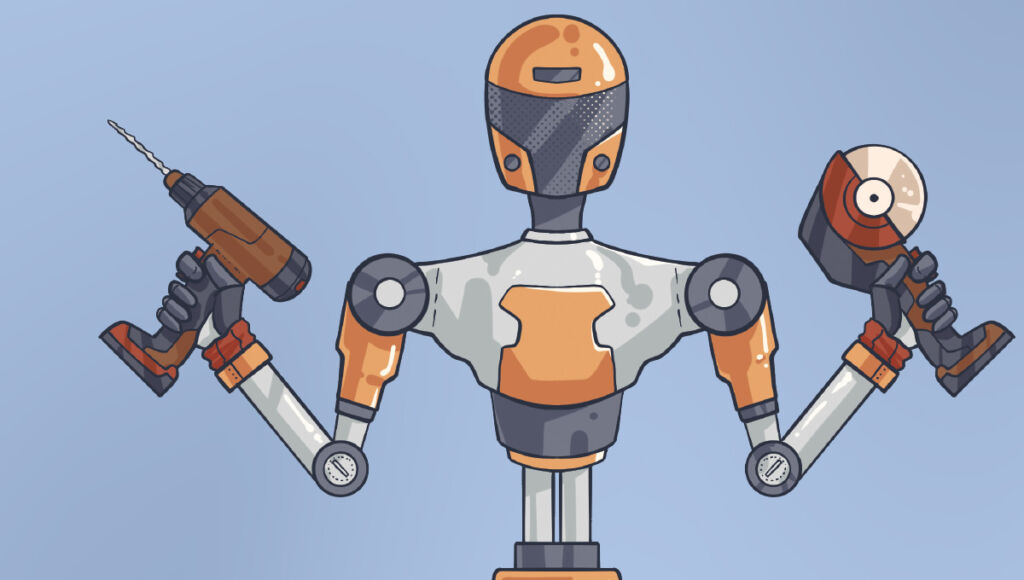
Technology to improve humanoids
Inbolt’s AI software imbues robots with 3D vision.
For venture firms wary of pouring money into full-blown humanoid robots, investing in their underlying technology may prove a less risky way to tap into the growing market for humanoids. Several digitized capabilities, including 3D vision and tactile sensing for hands, are likely to be integrated into humanoids, enabling them to provide much more sophisticated services and improve labor-intensive processes.
Inbolt is a good example of the VC-backed companies building technology to improve humanoids. The Paris-based company doesn’t build hardware. Instead it makes AI software that imbues robots at automotive plants with the 3D vision required to detect and work on car engine parts. That 3D vision matching capability enables robots to perform complex operations in unconstrained environments, making them much more like humanoids than robots that can work only in fixed positions in controlled environments.
“We can work with any kind of 3D camera mounted on a robot. Our role is to bring vision to the robot, so we bring in eyes and the brain, so it can see its environment and can adapt its trajectory to its environment,” Inbolt founder and CEO Rudy Cohen tells VCJ.
The company has raised $3 million in seed funding from investors including SOSV, MIG Capital and BNP Paribas Développement, the investment arm of BNP Paribas. Inbolt is currently raising a Series A round for €8 million to €10 million, which it expects to complete this summer.
Inbolt’s user interface can import a 3D model of a car engine, allowing a robot to compare the model with a physical car engine on the factory floor. The user interface then helps the robot detect the engine’s position and instructs the robot’s arms on how to adapt their trajectory to match the engine’s position. Other than installing the car model in the software, no human supervision is required. Training a robot on a new car model takes five to 15 minutes and only has to be repeated when installing a new 3D car model on the software.
Seeing what humans can’t
Inbolt’s largest customer is Stellantis, whose brands include Chrysler, Jeep, Citroen and Peugeot. The company has so far deployed its 3D vision matching algorithm in 10 of Stellantis’ 52 factories worldwide.
Like Inbolt, GelSight focuses on tactile imaging and sensing technology. The Waltham, Massachusetts-based company has designed tech to visualize and measure the 3D topography of any surface by digitally mimicking properties of human skin. The technology can capture 3D information revealing details the human eye can’t observe.
GelSight has more than 150 customers, including Blue Chip companies using its portable technology to measure things that require tactile sensors to examine micron-level resolution and can’t be measured any other way.
Now that there is a core business supporting operations, the company is starting to explore “how to connect all these different GelSight systems together on a network to provide intelligence and predictive capabilities to solve larger industrial questions and problems,” says John Ho, a partner at Anzu Partners. Anzu is among the firms that have invested $11.1 million in GelSight, Crunchbase reports. The firm invested in GelSight’s $2.5 million post-Series B round in February 2023.
Additional capital would enable GelSight to pursue robotics directly through partnering with manufacturers of humanoid hands, and possibly surgical robotics as well, Ho says. “It turns out when you’re touching tissue inside the body with an endoscope, there are differences between the feel of cancer cells or tumorous cells versus normal cells. So, if you can put that capability on the end of an endoscope, that would be a thing.” He foresees GelSight’s technology being used in quality control and inspection for manufacturing. “The best solution typically is a human being with eyes and hands that can touch and feel things or characterize things.”
Read More


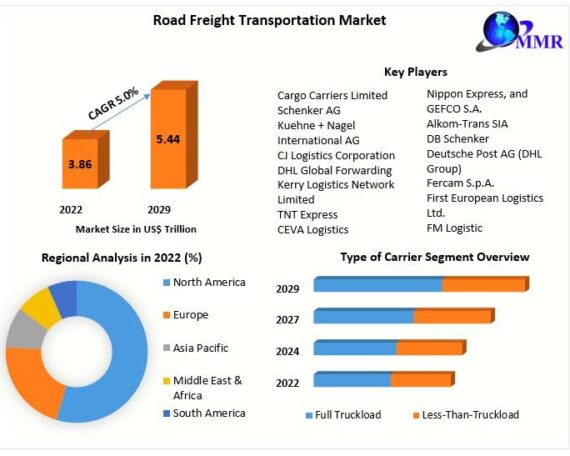






 “[One aim is to demonstrate Agility’s Digit humanoids are] an appropriate complement for human workers when those jobs cannot be filled”
“[One aim is to demonstrate Agility’s Digit humanoids are] an appropriate complement for human workers when those jobs cannot be filled”


